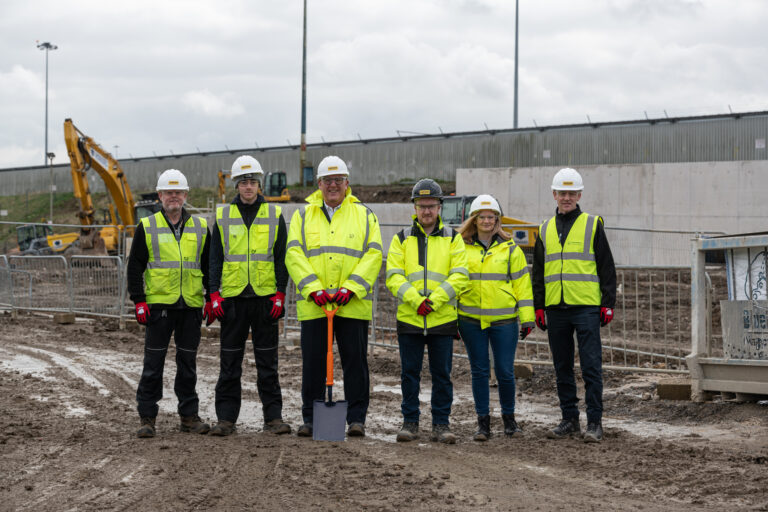Leeds Bradford airport has officially begun construction of its new £100m (US$125m) terminal with a groundbreaking ceremony held today (April 15).
The LBA:REGEN project will transform the airport’s existing terminal building into a modern, efficient and sustainable facility, enhancing passenger experience and supporting the region’s economic growth.
The project comprises a 9,500m2 , three-story extension to the existing terminal, alongside a significant refurbishment of the current facilities. Passengers will benefit from the creation of additional aircraft stands, more seating, faster security, new shops and eateries, a larger baggage reclaim area and immigration hall, and improved access for passengers with restricted mobility.
Vincent Hodder, CEO of Leeds Bradford Airport, said, “This ground breaking is a significant moment in LBA’s history, representing the culmination of thousands of hours of planning, consultation and design. As one of Yorkshire’s most significant infrastructure projects, we and our passengers are immensely excited to see it develop in the coming months. Once complete, this project will deliver the airport that our passengers, airlines and region need and deserve.”
Phased construction
Phase 1 of the project, which is being carried out by Farrans Construction, will include the construction of a new UK Border Force immigration facility and international baggage reclaim hall, as well as expanded retail and international departure lounge facilities. Phase 2 will include an enlarged central search and check-in areas, alongside larger duty free, retail and arrivals areas. Construction work is expected to be completed in 2026.
New jobs and improved sustainability
By 2030, LBA:REGEN has the potential to create 1,500 new direct jobs at LBA and 4,000 new indirect jobs, as well as contribute a total of £940m (US$1.17bn) to the local economy, according to data collected from York Aviation analysis. These jobs will include a mix of roles, including entry-level apprenticeships, customer experience officers, duty managers, air traffic engineers and data analysts.
The project will also play a significant part in the airport’s Net Zero Carbon Roadmap, with the installation of new efficient heating, lighting and machinery, as well as attracting airlines to deploy their newest, quietest and most efficient aircraft at the airport.

